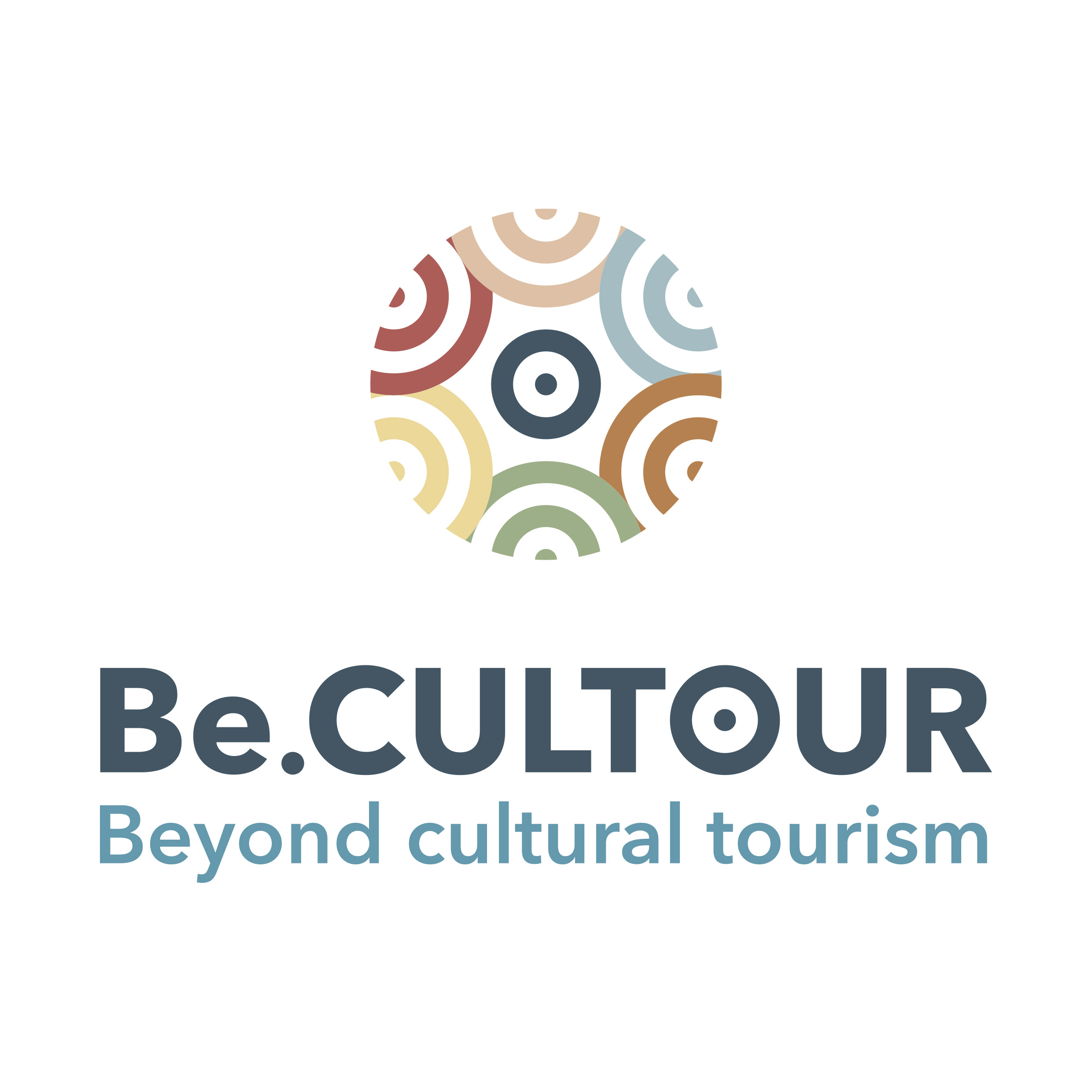Project facts
Presentation
Be.CULTOUR stands for “Beyond CULtural TOURism: human-centred innovations for sustainable and circular cultural tourism”. It expresses the goal to move beyond tourism, building Heritage Innovation Networks in European regions to co-develop innovative solutions aimed at regenerating cultural, social and environmental capital through sustainable and circular cultural tourism.
Be.CULTOUR will achieve its ambitious objectives through a set of coordinated innovation actions built around a structured human-centred design innovation process, involving pilot and “mirror” regions. The methodology of the project will follow four main steps, reflecting the general articulation of the design process:
- Exploration phase (M1-12);
- Action Plans and Concepts co-design phase (M13-18);
- Co-development phase(M19-20);
- Deployment phase (M21-36).
Be.CULTOUR targets cultural heritage sites in remote, peripheral areas, as well as over-exploited areas, focusing on their sustainability, wellbeing and regeneration building resilient communities through cooperation and exchange.
Connect, Learn, Co-create
The Be.CULTO UR Community is made of interconnected “circles” representing different levels of engagement.
UR Community is made of interconnected “circles” representing different levels of engagement.
The Community of Practice comprises Six European regions representing the Pilot Heritage Sites of the project:
– Vulture-Alto Bradano area, Basilicata Region, Italy
– The Cultural Park Of The Río Martín, Province Of Teruel In Aragon, Spain
– The Rural Cultural Landscape Of Larnaca, Larnaca Region, Cyprus
– Forsvik and Rydal Industrial Heritage Sites, Västra Götaland Region, Sweden
– Bač, Sremski Karlovci and Irig in Vojvodina Region, Serbia
– The Route of Stephan the Great and Saint, North-East Romania – Moldova cross-border area
The “Community of Interest” includes 16 Mirror Ecosystems, participating in a peer-learning scheme based on the pilot/mirror approach.
Impacts & Results
Cultural heritage represents a driver able to regenerate the “sense of place” and community bonds at the local level, while driving ecological regeneration, if circular economy models are adopted. Be.CULTOUR aims to strengthen entrepreneurship by engaging local communities and innovators in Heritage Innovation Networks, enhancing the skills and capacities of people in European regions.
Over the next three years, a programme made of a blend of offline and online activities will foster collaboration and knowledge transfer between the representatives of six pilot ecosystems, already partners in the consortium, with the 16 additional regional representatives.
Together, the 6 pilot and 16 mirror innovation ecosystems form the Be.CULTOUR Community and will learn methodologies, tools and practices fostering regional development through circular cultural tourism. Starting from the shared challenges linked to deprived, remote or over-exploited areas, the selected participants will mirror the resources developed throughout the project. They will then adapt the resources to their territory while actively engaging in networking and training activities dedicated to the transfer and uptake of innovative solutions. Territories featuring unique heritage assets will be at the heart of a learning journey that will focus on how to create attractive destinations after the COVID-19 pandemic.
With this in mind, Be.CULTOUR activities were built around 6 innovation areas reflecting potential unique selling points for the pilot territories: Rural co-living; Sensorial Heritage Experience; Contemporary Meanings of Heritage; Spiritual Travel Experience; Nature as Heritage; Industrial Heritage Experience. Other 4 cross-cutting innovation areas were further identified and will be explored as potentially impact sectors for cultural tourism: Transformative Travel; Remote Working Destinations; Proximity Travel; ‘Post-Cultural Tourism’.
Each Pilot Heritage Site will produce an Action Plan to foster regional development through circular cultural tourism.

